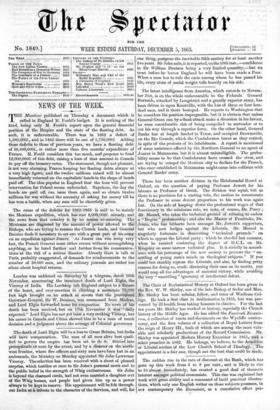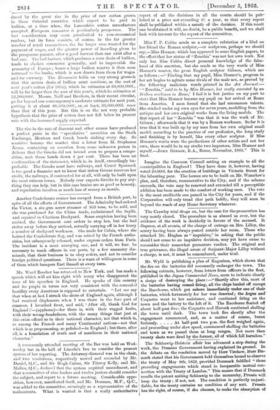The sudden rise in the rate of discount at the
Bank, which has gone up this week from 6 to 8 per cent., and is likely to rise to 10 almost immediately, has created a good deal of theoretic interest amongst political economists. This rise was explained last week with great ability and a command of lucid practical illustra- tions, which only one English writer on these subjects possesses, in our contemporary the Economist, as a cumulative effect pro- duced by the great rise in the price of raw cotton grown in those Oriental countries which expect to be paid in bullion, at a time when, the Lancashire cotton manufacture excepted, European commerce is particularly prosperous. The last consideration may seem paradoxical to non-economical readers, but its force consists, of course, in the far greater number of retail transactions, the far larger sum wanted for the payment of wages, and the greater power of hoarding given to the prosperous peasant, after a good harvest than can exist after a bad one. The bad harvest, which produces a corn drain of bullion, tends to slacken commerce generally, and to impoverish the peasantry of Europe ; hence a large bullion reserve is then soon returned to the banks, which is now drawn from them for wages and for currency. The Economist bolds on very strong grounds that this cotton drain of bullion must continue, as the cost of next year's cotton (for 1864), which he estimates at 68,000,0001., will be far larger than the cost of this year's, which he estimates at 52,500,0001. Messrs. Neill and Brothers, in their recent circular, go far beyond our contemporary's moderate estimate for next year, putting it at about 88,500,0001., or, at least, 36,000,0001. more than that of this year. But this is on the not very probable hypothesis that the price of cotton does not fall below its present rate with the increased supply expected.































 Previous page
Previous page